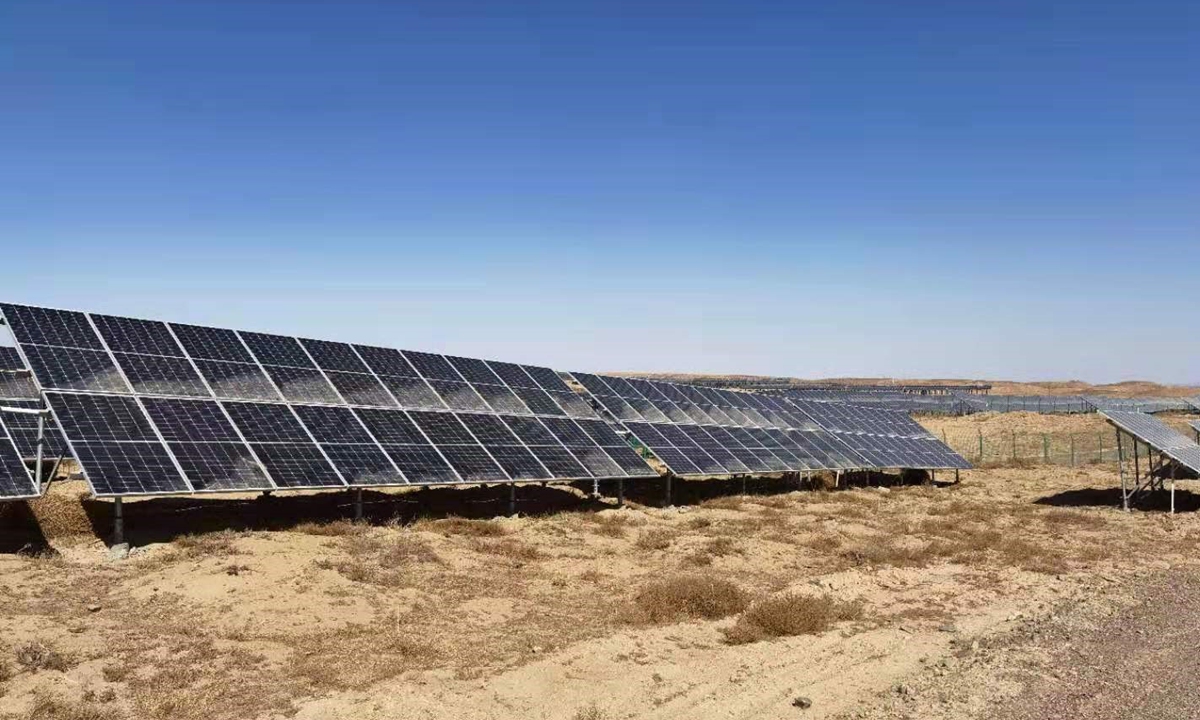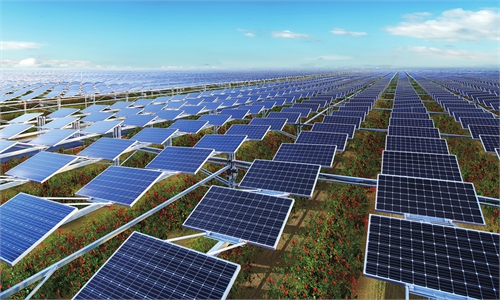SOURCE / PRESS RELEASE
Huawei’s smart PV solution supports world’s largest solar farm, to cut carbon emissions

Agriculture and PV integrated industrial base Photo: Courtesy of Huawei
Driving all the way east from Yinchuan, capital city of Northwest China's Ningxia Hui Autonomous Region on the eastern banks of the Yellow River, tens of thousands of solar panels that stretch to the horizon would suddenly come into view on the slopes of gullies, like a blue sea.
Drawing closer, farmers can be seen busy engaged in spring ploughing. It turned out that goji berries are panted under the panels.
This is Ningxia Baofeng Energy Group's solar farm that builds a solar power system over the goji plantation, which has in effect draped a green blanket over a desert landscape. Meanwhile, a rich layer of "edible rubies" under the blue sea of solar cells has greatly contributed to poverty alleviation and rural renewal.
Yang Zhusheng, a local famer relocated from Xihaigu, a region in the south of Ningxia, known for its harsh environment, has been working in the farm for over six years. Whereas his family made almost no income in Xihaigu, he and his wife now earn about 80,000-90,000 yuan a year.
Like Yang, many farmers are engaged in a variety of work related to goji berries and PV power generation. The farm hires about 80,000 employees each year, with every rural household reporting income increasing by 40,000 yuan.
Different from traditional photovoltaic (PV) stations, this solar farm is supported by smart operation and maintenance methods including cloud computing, wireless broadband systems and unmanned drone patrolling and checking.
Since the construction of the farm, it has adopted the most effective monocrystalline solar cell modules and a complete set of cutting-edge Huawei smart PV solution, which converts solar energy into electricity ultra-efficiently. Latest data reveals that the solar farm is estimated to reduce emissions of carbon dioxide by 2.047 million tons, equal to planting around 89 million trees.
The advantage of Huawei's smart PV solution lies in deeply integrating digital information technologies like artificial intelligence (AI), cloud and computing with PV power plants, which in turn improves electricity generation, maintenance efficiency while ensuring stability and grid connectivity in harsh environment.
It adopts world-leading, horizontal single-axis automatic tracking technology, allowing the solar panels to track the sun like sunflowers, greatly improving power generation compared to traditional PV power plants, said Yan Jianfeng, a technician from Huawei's smart PV department.
The brain of Huawei's smart PV solution is smart inverter, which can connect around 160 solar panels. The inverter can transmit the operation status of the entire power station to the cloud through sensors, and then use big data analysis and algorithms to make accurate diagnosis and guidance for the operation and maintenance of the power station, Yan introduced.
"Through algorithms, Huawei's smart PV solution not only connects PV plant to grid but will continue to improve the stability of the grid-tied PV plant, especially to ensure connectivity under the circumstance of weak current," he said.
In September 2020, Huawei's smart PV solution contributed to the connection of the world's largest 2.2 GW PV plant to power grid in Hainan Prefecture, Northwest China's Qinghai Province.
Amid the global trend of carbon neutrality, Zhou Taoyuan, president of Huawei's Digital Power Product Line, recently said that Huawei will continue to strengthen research and development investment in a bid to strive for innovations with partners and bring green power to households and industries to boost carbon neutrality.
It's reported that the accumulative shipment of Huawei's smart PV solution products have exceeded 160 GW, widely used in more than 60 countries in education, healthcare, transport, modern manufacturing and other industries.
A total of 300 billion kilowatt-hours of green electricity is generated, which reduces carbon dioxide emission of 148 million tons, equal to planting over 200 million trees.

